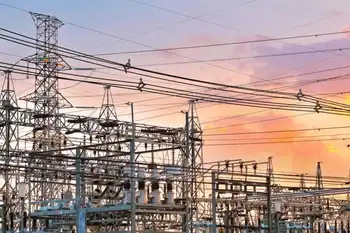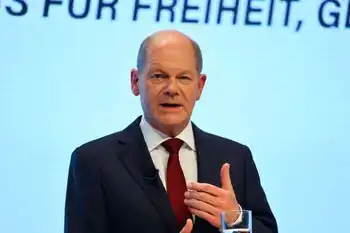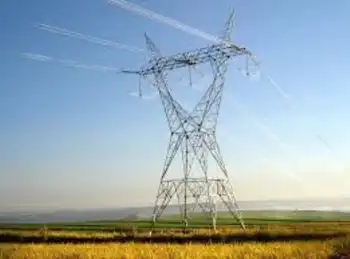Ordinance would darken businesses' overnight lights
By Knight Ridder Tribune
High Voltage Maintenance Training Online
Our customized live online or in‑person group training can be delivered to your staff at your location.

- Live Online
- 12 hours Instructor-led
- Group Training Available
Well Dallas is a jewel, oh yeah, Dallas is a beautiful sight. And Dallas is a jungle, but Dallas gives a beautiful light. Songwriter Jimmie Dale Gilmore's love letter to Big D's skyline evokes visions of Reunion Tower's blinking bulbs, the Bank of America building's green neon glow and the blazing red hues of Pegasus, perched atop downtown's Magnolia Hotel.
But these and thousands of other city lights could fall dark four hours each night under an ordinance Dallas City Council members will consider as part of a broader effort to conserve energy and reduce power plant emissions. According to an ordinance draft, businesses citywide would be required to switch off most of their exterior and signage lighting between 2 a.m. and 6 a.m. That includes:
- Decorative lighting, "such as lighting that illuminates or outlines a building's facades or elements";
- Lighting used to illuminate fountains, sculptures, flagpoles and other similar structures;
- Landscape illumination lighting;
- Lighting that illuminates premise signs, whether attached to or separate from a building.
Violators could face fines of up to $2,000. Among the ordinance's exemptions are security, hospital, traffic control, residential and transportation lighting. State and federal government facilities, as well as businesses open and operating between 2 a.m. and 6 a.m., would also be exempt, according to the ordinance.
"I applaud any of the efforts the city is trying to implement to try and get us to conserve. But we are a home for people who come from outside - a beacon for location," said Steve Vissotzky, general manager of the Hyatt Regency Dallas, which includes Reunion Tower - perhaps the city's best-known structure.
"It's really a landmark, and it gives people direction to my hotel. I would hope they'd include an exception for that." Said John Crawford, executive director of the business organization Downtown Dallas: "Dallas has a very unique skyline, and for that to go dark would take away from how people perceive the city.
If this is going to be a 24-7 downtown, I don't think that his ordinance will go over well with the people and businesses here." But Ann Drum, chairwoman of the Dallas Sierra Club, argues the benefits of slashing energy consumption citywide far outweigh the potential drawbacks of businesses going dark during hours when most Dallasites are sound asleep. "Are we trying to get more people on the streets between 2 a.m. and 6 a.m.? Is that a priority in this city?" Ms. Drum asked. "We should do anything we can do to reduce our usage of energy or emission that cause greenhouse gases so long as it doesn't significantly harm our quality of life. It sounds like a pretty commonsense plan to me."
Several city council members agree that Dallas must attempt to implement aggressive environmental regulations in a time when Dallas County's air quality is consistently poor during summer months. The council Wednesday will also consider strict regulations on idling trucks, pollutant-belching vehicles and where the city purchases its cement, among other measures. But even the council's most strident environmentalists say the lighting ordinance as written may require tweaking.
"The lighting ordinance would save an enormous amount of money and energy citywide," said Mayor Laura Miller, who's led efforts to prevent TXU Corp. from building traditional, coal-fired power plants in Texas that she says will degrade the region's air quality. "But you don't want to lop off your nose to spite your face. We may be more likely to require that premise signs be turned off. We'll have a good discussion about the rest" of the draft ordinance. City officials could not immediately provide estimates of how much energy Dallas would save, or how many tons of emissions would be prevented, through its ordinance.
At this juncture, the council should remain open to all energy reduction ideas, Deputy Mayor Pro Tem Elba Garcia said. "Dallas has been in the forefront of environmental issues recently, and this is a first good step in an effort to conserve energy - and it's a great opportunity for the council to discuss the issue," Dr. Garcia said.
District 11 City Council member Linda Koop, chairwoman of the council's Transportation and Environment Committee, says she expects the council to vote on portions of the overall emissions reduction plan Wednesday, but may further study elements of the ordinance. "We'll just have to have that conversation and see," Ms. Koop said.
"Obviously, there are benefits to the ordinance, in that it decreases energy consumption, which decreases emissions. There are probably some things we can do to address decorative lighting, though." The Tucson, Ariz.-based International Dark-Sky Association estimates more than 1,000 U.S. cities have passed some sort of "dark skies" ordinance. District 12 City Council member Ron Natinsky, for one, isn't convinced Dallas needs to join in.











